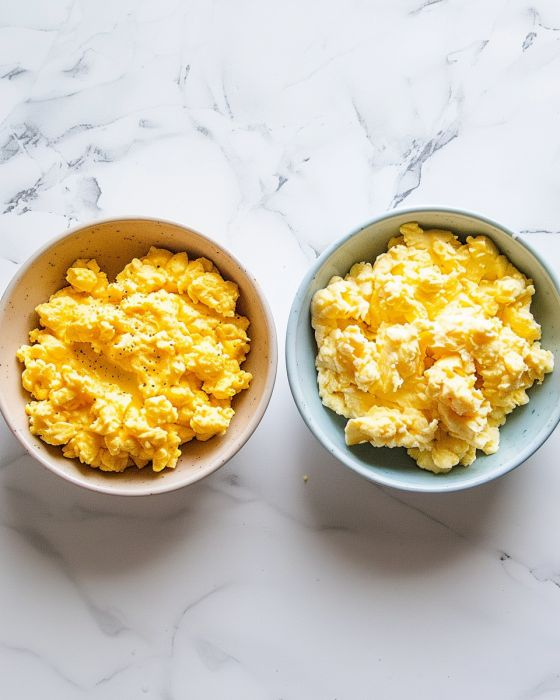
Opinions on making perfect scrambled eggs vary widely, especially on whether to add milk. My mother-in-law swears by adding milk, claiming it enhances texture and flavor, while I feel it detracts from the eggs’ natural taste. Here, we’ll examine both approaches to help you find what’s best for you.
The Case for Adding Milk
Many fans of adding milk say it leads to a creamier texture, as the extra moisture softens the eggs into a silky scramble. Milk also mellows the rich, savory taste of eggs, making them gentler on the palate. Plus, it can increase volume—a handy trick when serving a crowd.
The Case Against Adding Milk
Purists argue that milk dilutes the eggs’ natural flavor, giving a blander result. Some also find that milk can cause a rubbery texture if overcooked, as the added liquid requires a longer cooking time. For them, simplicity is key—high-quality eggs need nothing more than a bit of butter and salt to shine.
The Science
Scientifically, milk dilutes egg proteins, softening the curd when cooked gently. But if overcooked, the added moisture causes proteins to bond tightly, resulting in a rubbery texture. Milk also increases cooking time, making it trickier to achieve perfect doneness.
Alternatives to Milk
If you’re after creaminess without milk, try adding butter, which brings a richer texture, or a splash of cream for decadence. Grated cheese can also add flavor and texture without diluting the eggs.
How to Make Perfect Scrambled Eggs Without Milk
Whisk eggs, heat a pan with butter, pour in the eggs, and stir gently until just set. Remove from heat while still slightly runny to achieve creamy, flavorful eggs without milk.
Conclusion
Ultimately, whether to add milk is about preference. For richer eggs, go without; for a softer texture, milk may be ideal. Try both methods to see which suits your taste—cooking is personal, and there’s no wrong way.